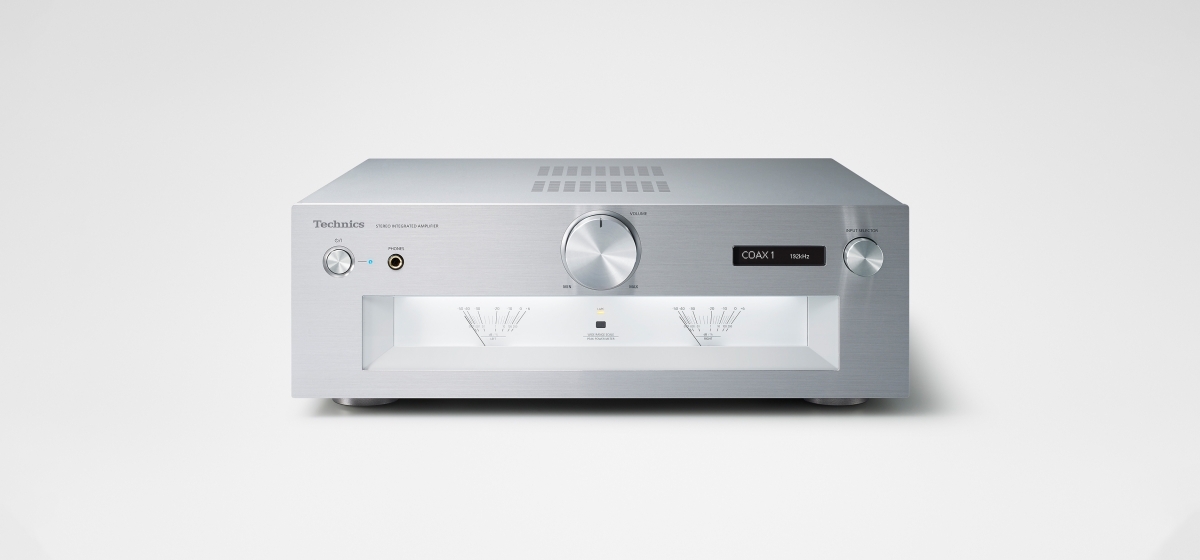Product Description
In order to faithfully transmit the massive amount of audio data sent to the speakers without loss, the Technics SU-G700M2 power amp section uses full digital amplification employing the JENO Engine, based on the design concept of reference systems. In order to solve the issue of sound quality degradation due to jitter, which poses problems for conventional digital amplifiers, the Technics SU-G700M2 has an original jitter reduction circuit that eliminates jitter over the entire audible frequency range. Also, a unique, high-precision PWM (Pulse Width Modulation) conversion circuit is used for PWM conversion, which is important for sound quality. By optimising items such as the noise-shaping speed, degree, and quantization number through our unique expertise, data even in the wide dynamic range contained in high-resolution sound sources is converted to PWM signals without loss. These technologies provide reproduction of natural and finely detailed sound, enabling perception even of delicate music nuances.
Speaker impedance changes with each frequency and a power amplifier is required to drive speakers without being affected by the speaker’s characteristics. However, conventional digital amplifiers are connected to speakers through a low-pass filter at the output stage, so they are even more strongly affected by the speaker impedance characteristics. Also, although the amplitude characteristics of conventional amplifiers due to negative feedback were improved, the phase characteristics could not be enhanced. We thus developed a speaker impedance adaptive optimisation algorithm that performs correction to the ideal impulse response through digital signal processing by measuring the frequency amplitude-phase characteristics of the amplifier with the speakers connected. This new technique enables flattening the frequency characteristics of amplitude and phase, which had previously not been achieved by amplifiers, as well as delivering a sound with rich spatial expression.
The power supply technology incorporated in the reference-class model SU-R1000 has been employed for improved speaker drive power and a greater feel of energy. The switching frequency has been increased from the conventional 100kHz band to the 400kHz band to ensure stable supply of voltage and current and to reduce adverse effects of modulation noise on the audio quality. The device is equipped with the same GaN FET and SiC SBD as those mounted in the SU-R1000 to deliver maximum performance from the high-speed switching power supply system.
What’s more, a Super Low Noise Regulator is provided in the later stage. It prevents the decrease of regulation due to fixed switching frequency and impedes the mixing of noise component into high frequencies. The result is a low-noise and high-response power supply that maximises the performance of the digital amplifier.
In integrated amplifiers there are a variety of circuits, including circuits that handle the micro-signals of inputs and those that handle a large current, such as output circuits and power-supply circuits. The Technics SU-G700M2 uses a three-section construction with partitions installed between the circuit blocks according to the signal level handled. This eliminates interference between circuit blocks, thus achieving clear sound quality. In addition to the three-section construction, the SU-G700M2 comes with a bottom chassis featuring a two-layer construction with 1.2-mm-thick and 2-mm-thick steel plates, a top panel made of a 1.6-mm-thick steel plate and a 7-mm-thick aluminium front panel for improved vibration damping.
PHONO MC input is now supported. The PHONO input achieves low noise by using a differential parallel connection configuration of a first-stage, low-noise FET. In addition, four-level gain adjustment enables selection of the best gain according to the cartridge output. This enables optimal playback of high-grade analogue recorded sound sources tailored to the user’s environment.
The SU-G700M2 uses a Class AA headphone amplifier with separate amplifier circuits for voltage amplification and current amplification of the audio signal. The voltage is amplified by a high-grade operational amplifier, the current is amplified by an operational amplifier with high current-supply capability, and the high-grade PWM signal output from the JENO Engine is converted to analogue with high precision, thus enabling headphones to be ideally driven. This makes it possible to reproduce music with low distortion and a wide frequency range no matter what the load impedance of the headphones is.









